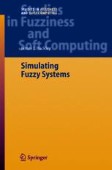Search
Search Results
-
Optimal stabilization of linear stochastic systems
Having introduced and motivated our concepts of stochastic control systems in the previous chapter we now turn to optimal and suboptimal...
-
Machine Shop I
The queuing system in this chapter is shown in Fig. 11.1. This application was adopted from a problem in ([1], p.594). We continue this problem in...
-
From Genetic Variation to Probabilistic Modeling
Genetic algorithms ⦓GAs) [53, 83] are stochastic optimization methods inspired by natural evolution and genetics. Over the last few decades, GAs have...
-
Inventory Control II
This chapter continues the inventory control problem studied in the previous chapter. The new system is shown in Fig. 17.1. We have added two things...
-
Project Network Model
The project network diagram is in Fig. 26.1. This problem is modelled after an example in [2]. The project consists of various jobs that must be...
-
Queuing II: No One-Step Calculations
In this chapter we will study the fuzzy system shown in Fig. 5.1 now reproduced as Fig. 9.1. This example was adapted from an example in [1]. The...
-
Linear map**s on ordered vector spaces
Before we can start to analyze the generalized Riccati operators derived in the previous chapter, we have to deal with generalized Lyapunov operators...
-
Priority Queues
This chapter will use the queuing system in Chaps. 5 and 9, but with priority orders. The system is shown in Fig. 19.1. Everything is the same as in...
-
Hierarchical Bayesian Optimization Algorithm
The previous chapter has discussed how hierarchy can be used to reduce problem complexity in black-box optimization. Additionally, the chapter has...
-
Fuzzy Probability Theory
In this chapter we look more closely at the fuzzy binomial distribution, the fuzzy Poisson, and at the fuzzy normal,exponential and uniform...
-
Simulation
Now we come to the point were we need to select simulation software to do all the crisp simulations staring in Chap. 7. The author is not an expert...
-
Fuzzy Estimation
sThe first thing to do is explain how we will get fuzzy numbers, and fuzzy probabilities, from a set of confidence intervals which will be...
-
Simulation Optimization
In this chapter we discuss how we plan to solve the optimization problems attached to the simulation as expressed in (5-4)-(5-5) in Chap. 5, or...
-
Optimizing a Production Line
The simple production line considered in this chapter is shown in Fig. 20.1. This problem has been adapted from an example in [1]. This situation is...
-
Queuing I: One-Step Calculations
In this chapter we show situations where simulation can produce the same results as fuzzy calculations which employ the extension principle. We argue...
-
Simulation Programs
In this chapter we present some of the GPSS programs used in Chaps. 9–26. We had to omit many programs in order to keep this chapter. less that 20...
-
Summary and Conclusions
The first objective of this book is to explain how many systems naturally become fuzzy systems. The second objective is to show how regular (crisp)...
-
Optimization of Image Compression Method Based on Fuzzy Relational Equations by Overlap Level of Fuzzy Sets
A design method of coders on YUV color space is proposed based on an overlap level of fuzzy sets, in order to optimize the image...
-
Multi-layer Image Transmission with Inverse Pyramidal Decomposition
This paper presents a new image compression method based on the Inverse Difference Pyramid (IDP) decomposition, and one specific application of this...
-
A Fuzzy Rule-Based Trading Agent: Analysis and Knowledge Extraction
In this paper, we show how a fuzzy rule-based system is developed for trading in a futures market. By our fuzzy rule-based system, an agent...
